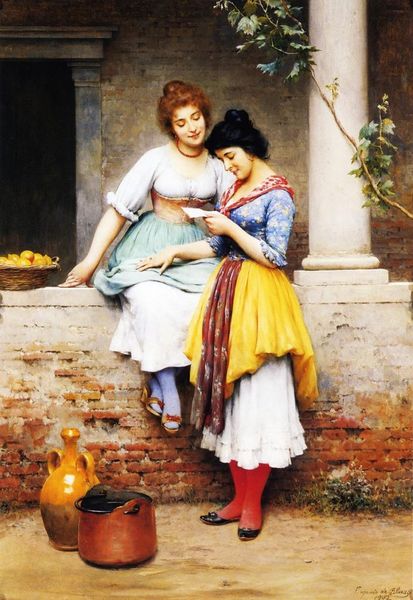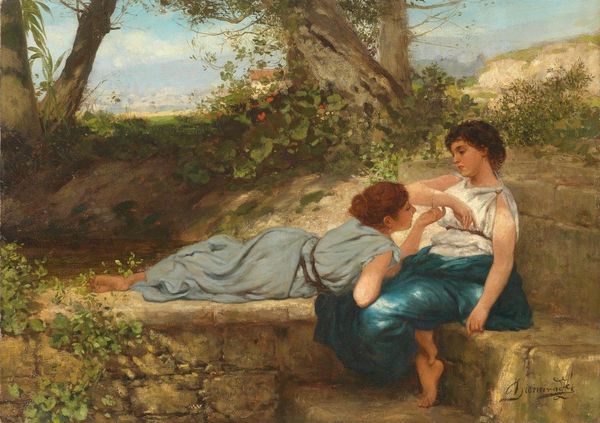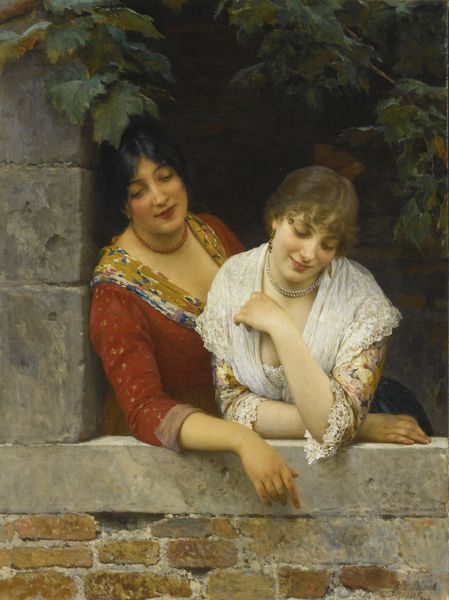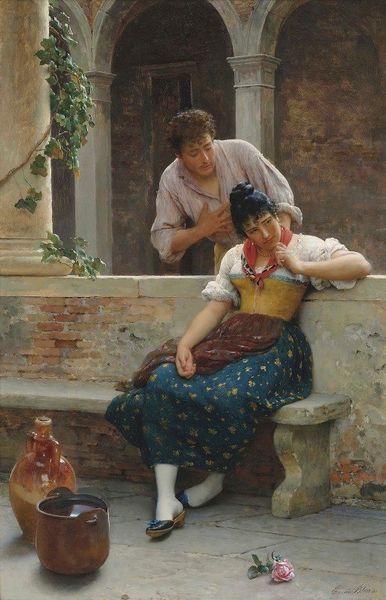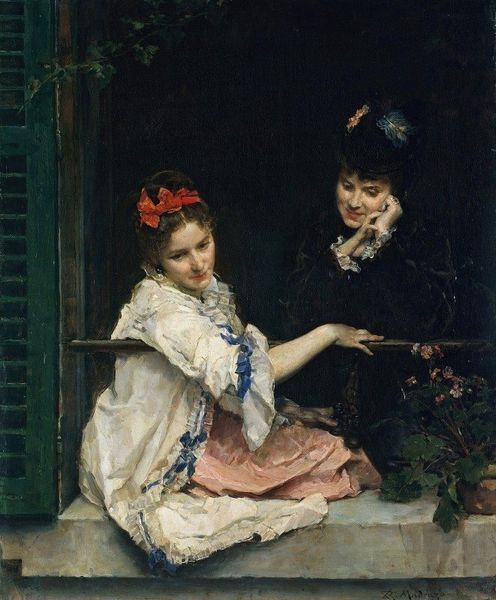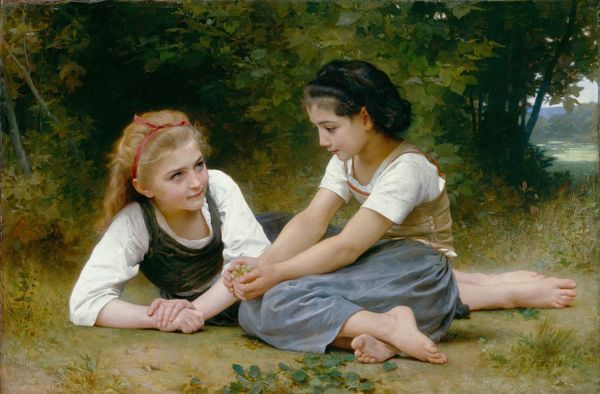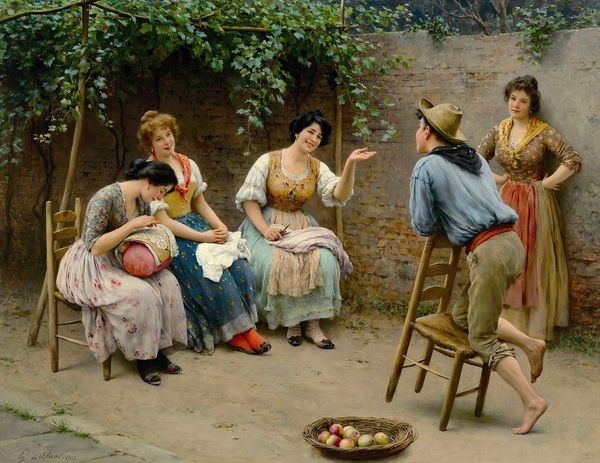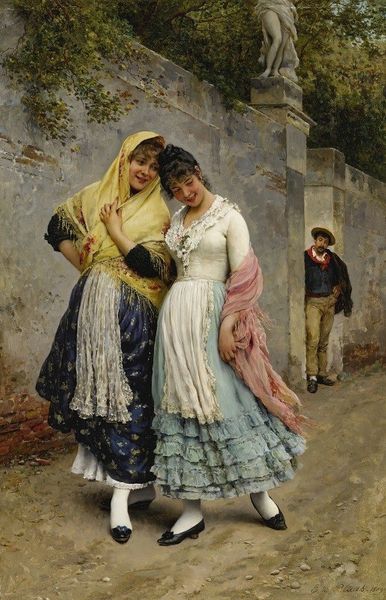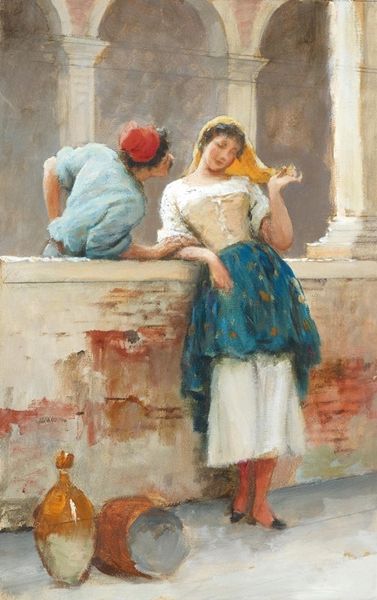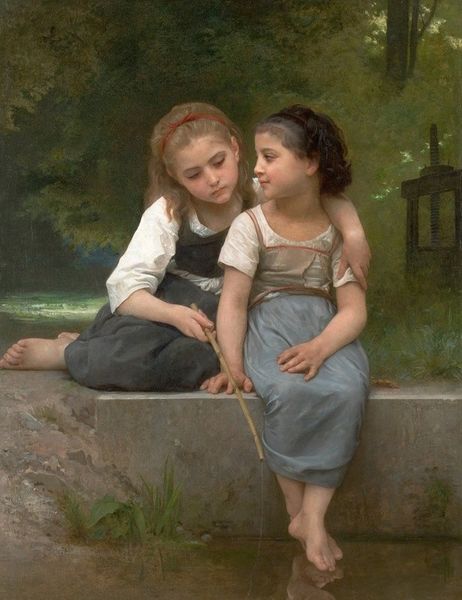
Dimensions: 91.44 x 64.77 cm
Copyright: Public domain
Curator: Eugene de Blaas, a painter celebrated for his depictions of Venetian life, created this oil on canvas entitled "The Unseen Suitor" in 1898. What strikes you upon first viewing? Editor: It has an almost stifling sweetness, doesn't it? The soft colors, the idealized figures... a confectionary romanticism. I feel the weight of unspoken societal expectations hanging in the air. Curator: Interesting. Considering de Blaas’ process, observe the minute detail in the rendering of the women's garments: the lace trim, the folds of the skirts, even the individual brushstrokes that define the brickwork in the background. This is skilled labor meticulously applied to create this impression. What purpose do you think that level of material precision has in supporting or challenging that romantic mood? Editor: The meticulousness you mention contributes to a particular narrative: the performance of femininity under patriarchal scrutiny. Their dresses are modest yet appealing, carefully constructed to adhere to the constraints placed upon women and courtship. That precision almost traps them within those roles. Curator: So, you perceive this as a social critique couched in beauty? The work itself exists within a market economy and de Blaas sold well, yet your reading focuses on resistance within the painting itself? Editor: Precisely. Consider the title. The “Unseen Suitor" suggests a transaction, a silent exchange happening off-canvas. It hints at arranged marriages, dowries—the economic realities underpinning these supposed romances and their restrictive frameworks, a reality where female agency is carefully monitored and curated. Curator: But isn't there an element of shared intimacy, too? The women seem comfortable, almost conspiratorial. Does that space offer them a means to resist, perhaps even subvert the male gaze? What if they were refusing a suitor, or contemplating the cost of that refusal, knowing the material consequences of stepping outside established parameters? Editor: Perhaps the conspiratorial air isn't about romance, but a quiet, coded resistance. The flower she is presenting or picking could signify love or a gesture, yet more profoundly, a symbol of both beauty and ephemerality within an inequitable system. They're not just passive subjects; they're engaged in a quiet dialogue of defiance. Curator: So, what began as a pretty picture reveals itself to be something of a coded commentary? This deeper probing highlights its value and enduring relevance. Editor: Absolutely. It is vital we keep looking at these works, acknowledging the artistry of creation and their nuanced critiques of society's complex layers.
Comments
No comments
Be the first to comment and join the conversation on the ultimate creative platform.
